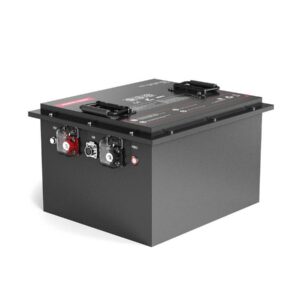
What is the new battery to replace lithium?
Sodium-ion batteries (SIBs) are emerging as a promising alternative to lithium-ion batteries (LIBs), leveraging sodium’s abundance and lower cost. Unlike LIBs, which rely on scarce lithium resources, SIBs use sodium—a widely available element—enabling scalable production for grid storage and electric vehicles. Current SIB prototypes achieve energy densities of 100–150 Wh/kg, comparable to early LIBs, with ongoing improvements targeting 200 Wh/kg by 2030. Pro Tip: SIBs perform better in low-temperature environments (-20°C) than standard LIBs, making them suitable for cold-climate applications.
How to Safely Dispose of and Recycle Car Batteries
How do sodium-ion batteries compare to lithium-ion in performance?
Sodium-ion batteries trade lower energy density for cost efficiency and thermal stability. While LIBs reach 250–300 Wh/kg, SIBs currently max at 150 Wh/kg. However, SIBs maintain 80% capacity after 3,000 cycles versus 1,000–2,000 cycles for standard LIBs. For example, CATL’s first-gen SIBs power EVs with 250 km range, ideal for urban commutes. Pro Tip: SIBs don’t require cobalt, reducing ethical sourcing concerns linked to LIBs.

Beyond energy metrics, sodium-ion chemistry excels in charge/discharge rates. Laboratory tests show SIBs achieving 5C continuous discharge without significant degradation—critical for power tools and fast-frequency grid response. Transitionally, manufacturers blend hard carbon anodes with layered oxide cathodes to optimize sodium-ion mobility. A real-world analogy: SIBs function like freight trains (high endurance, moderate speed) versus LIBs’ bullet trains (high speed but infrastructure-intensive).
| Parameter | SIB | LIB |
|---|---|---|
| Raw Material Cost | $3/kg (Na) | $15/kg (Li) |
| Operating Temp | -20–60°C | 0–45°C |
What industries are adopting sodium-ion technology?
Key adopters include grid storage and low-speed EVs. China’s State Grid uses SIBs for renewable energy smoothing, while BYD integrates them into electric buses. Startups like Northvolt plan gigafactories dedicated to SIB production by 2026. Pro Tip: Pair SIBs with solar farms—their cycle life aligns perfectly with 25-year panel warranties.
Practically speaking, SIBs are penetrating markets where cost trumps energy density. Telecom backup systems, for instance, benefit from SIBs’ wider temperature tolerance and 20% lower upfront costs versus LIBs. But what about aerospace? While SIBs aren’t yet viable for aircraft due to weight constraints, their non-flammable electrolytes make them safer for residential storage. A breakthrough example: Tiamat’s 18650-format SIB cells powering French e-bike fleets since 2023.
Battery Expert Insight
FAQs
Can sodium-ion batteries use existing chargers?
Partially—SIBs require modified CC-CV profiles due to lower voltage curves (2.5–3.7V vs. 3.0–4.2V for LIBs). Always verify charger compatibility to prevent undercharging.
Are sodium batteries safer than lithium?
Yes, SIBs exhibit reduced thermal runaway risks thanks to stable electrolytes. Abuse tests show 60% lower peak temperatures during short circuits versus LIBs.
